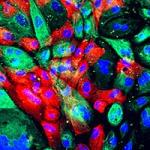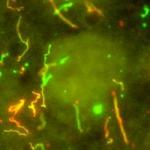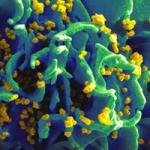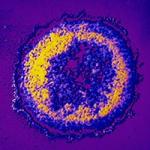
Research Topics
Dr. Nihal Altan-Bonnet heads the Laboratory of Host-Pathogen Dynamics at the National Institutes of Health in the USA. Her lab is comprised of a multidisciplinary team of cell biologists, virologists, environmental engineers, and computational biologists who apply their talents to understand how viruses transmit themselves effectively among hosts and establish successful infections. Dr. Altan-Bonnet and her team have made groundbreaking discoveries that include:
- Discovering that PI4P lipids panvirally critical for infection by RNA viruses (Hsu et al., Cell 2010)
- Discovering a novel highly virulent viral infectious unit where viruses are transmitted en bloc inside extracellular vesicles (Chen et al., Cell 2015; Santiana et al., Cell Host and Microbe 2018).
- Discovering SARS-CoV2 and other coronaviruses use the unusual lysosomal exocytotic pathway to exit cells, disrupt antigen presentation and evade immune defenses (Ghosh et al., Cell 2020).
- Discovering that enteric viruses such as norovirus, rotavirus and astrovirus also replicate in salivary glands and transmit through saliva (Ghosh et al., Nature 2022)
Biography
Dr. Nihal Altan-Bonnet received her Ph.D. in cellular biophysics from The Rockefeller University. After conducting postdoctoral research with Dr. Jennifer Lippincott-Schwartz at the NIH, she joined the faculty of Rutgers University. In 2013, Dr. Altan-Bonnet returned to the NIH as an Earl Stadtman Investigator, becoming head of the Laboratory of Host-Pathogen Dynamics at the NHLBI and was promoted to tenured Senior Investigator in 2017.
Dr. Altan-Bonnet has been recognized several times for her outstanding research, including receiving the Presidential Early Career Award in Science and Engineering (PECASE) (2012), being named a Kavli Fellow of the National Academy of Sciences (2013), a Scialog Fellow of the Gordon and Betty Moore Foundation (2015-2017) and being elected to the American Academy of Microbiology (2022) and the Henry Kunkel Society (2023).
Selected Publications
- Ghosh S, Kumar M, Santiana M, Mishra A, Zhang M, Labayo H, Chibly AM, Nakamura H, Tanaka T, Henderson W, Lewis E, Voss O, Su Y, Belkaid Y, Chiorini JA, Hoffman MP, Altan-Bonnet N. Enteric viruses replicate in salivary glands and infect through saliva. Nature. 2022;607(7918):345-350.
- Ghosh S, Dellibovi-Ragheb TA, Kerviel A, Pak E, Qiu Q, Fisher M, Takvorian PM, Bleck C, Hsu VW, Fehr AR, Perlman S, Achar SR, Straus MR, Whittaker GR, de Haan CAM, Kehrl J, Altan-Bonnet G, Altan-Bonnet N. β-Coronaviruses Use Lysosomes for Egress Instead of the Biosynthetic Secretory Pathway. Cell. 2020;183(6):1520-1535.e14.
- Santiana M, Ghosh S, Ho BA, Rajasekaran V, Du WL, Mutsafi Y, De Jésus-Diaz DA, Sosnovtsev SV, Levenson EA, Parra GI, Takvorian PM, Cali A, Bleck C, Vlasova AN, Saif LJ, Patton JT, Lopalco P, Corcelli A, Green KY, Altan-Bonnet N. Vesicle-Cloaked Virus Clusters Are Optimal Units for Inter-organismal Viral Transmission. Cell Host Microbe. 2018;24(2):208-220.e8.
- Chen YH, Du W, Hagemeijer MC, Takvorian PM, Pau C, Cali A, Brantner CA, Stempinski ES, Connelly PS, Ma HC, Jiang P, Wimmer E, Altan-Bonnet G, Altan-Bonnet N. Phosphatidylserine vesicles enable efficient en bloc transmission of enteroviruses. Cell. 2015;160(4):619-630.
- Hsu NY, Ilnytska O, Belov G, Santiana M, Chen YH, Takvorian PM, Pau C, van der Schaar H, Kaushik-Basu N, Balla T, Cameron CE, Ehrenfeld E, van Kuppeveld FJ, Altan-Bonnet N. Viral reorganization of the secretory pathway generates distinct organelles for RNA replication. Cell. 2010;141(5):799-811.
Related Scientific Focus Areas


Microbiology and Infectious Diseases
View additional Principal Investigators in Microbiology and Infectious Diseases



This page was last updated on Tuesday, January 14, 2025